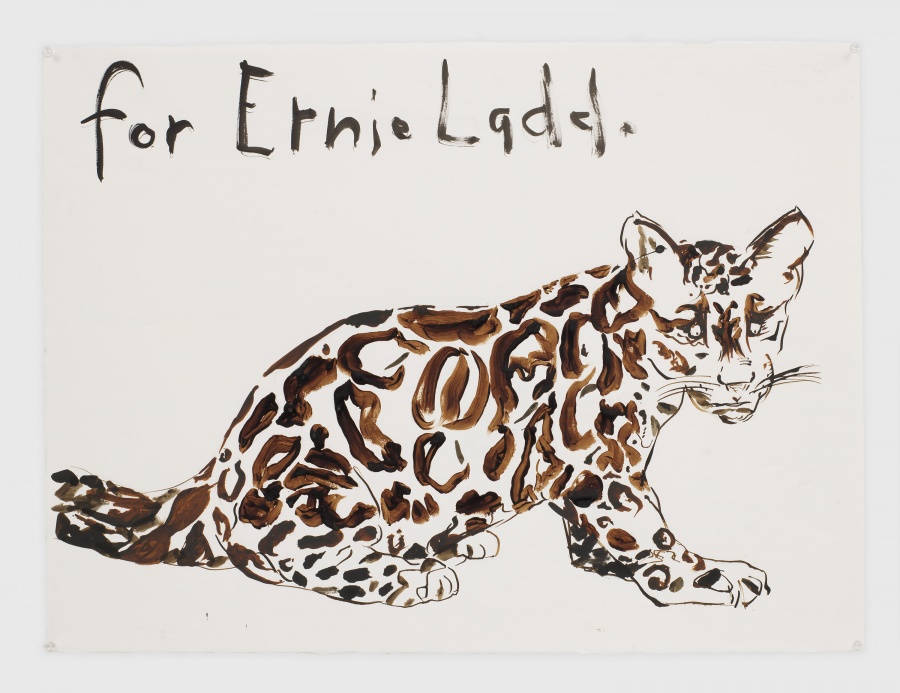An Interview With Rita Ackermann
30.05.19 | Article by Philippa Snow | Art, fashion, interview | MM13 Click to buy
Old-school New York meets current-day Brooklyn meets contemporary high fashion, as longtime friends and collaborators Mark Borthwick and Rita Ackermann offer their own performance spin on Demna Gvasalia’s Haute Couture gowns for Balenciaga A/W17.
Photography by Mark Borthwick
All gowns by Balenciaga

“Everybody ended up here who wanted to be part of that New York groove”
S: I read in an interview that you often find yourself having so many ideas so quickly that it’s actually difficult to process them.
RA: I actually don’t have many ideas any more! In the last 5 years, I can probably count on one hand how many ideas I’ve had. PS: Well, once you’ve had one — do you work fast? How long does a painting take to complete?
RA: Every painting has a different path to completion, so it’s difficult to recall the stages of actually making one; and then when I make an attempt to do so, I feel as though the words fall flat, or as if they’re too inarticulate. There have absolutely been times when I’ve tried desperately to communicate how I make my work — but more and more, I’ve been realising how impossible it is for me to explain or describe what I do when I paint: because when something good starts happening, I just lose myself. There is really no explanation for that kind of activity. Most of the time, I just sit in the studio, and I wait for that moment; and I do find that sitting quietly tends to give a painting the space to speak. Sometimes, I don’t even notice at first that I’ve finished a piece! But I think sitting with it for weeks can often help me to see more clearly what’s in front of me.

PS: You moved to New York from Budapest around 1992. I imagine that the experience of working as an artist in New York — and in the States in general — is very different in the current climate than it was in the 90s…
RA: In a sense, New York is rapidly changing with the times; but in then another sense it never changes. It’s a brutal, apocalyptic concrete jungle, just screeching 24/7. Its energy can bring you down, or it can make you high, because it really does feel like anything could happen in a day. In the 90’s and early 2000s, New York definitely had a creative bohemian myth; something you could tap into on the streets, or in places where your idols used to hang out. That artistic thing, or that scene that actually made you want to belong there, or to meet up and create together — I’m not sure it’s around anymore. Maybe I’m just too preoccupied with my own mission now to be part of anything. It is harder now, and it takes longer to carve a path: because there is a lot of junk around in the age of omnipresence. I don’t engage in social media, therefore I miss out on a lot of things — even with my old friends. But it feels exhilarating when something comes to my attention without being connected in that way.


“New York is rapidly changing with the times; but in then another sense it never changes. It’s a brutal, apocalyptic concrete jungle, just screeching 24/7.”
PS: Those early days in New York were also when you met a lot of lifelong co-conspirators, collaborators, and so on — like Chloe Sevigny, Lizzi Bougatsos, Mark Borthwick (who photographed you here), and Harmony Korine. How were you all connecting back then?
RA: At that time, if somebody was making something new, the word got around town very quickly — and then a few months later, Europe and Japan would catch up with whatever was news. And because it was before the age of the cell-phone, people had to approach each other in person. I think New York felt like the center of the world specifically because somehow, everybody ended up here who wanted to be part of that New York groove.



PS: As an artist, do you think of yourself as having a persona? I know that “Ackermann” is an assumed name from elsewhere in your family tree.
RA: What’s important for me now is to remove my ego from the art I make. I believe that being an artist is similar to being an instrument, and that the person who makes the work, ultimately, can’t add to it by using her personal virtues — only by virtue of how good a listener she is. I’m constantly challenging myself to be better listener. Once I can understand what animals are saying when they talk to each other, I’ll finally have learned to listen well enough!
Read more in Modern Matter issue 13, The Anti Issue.




